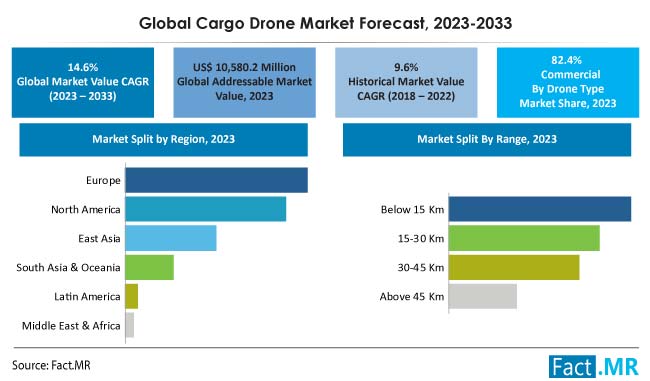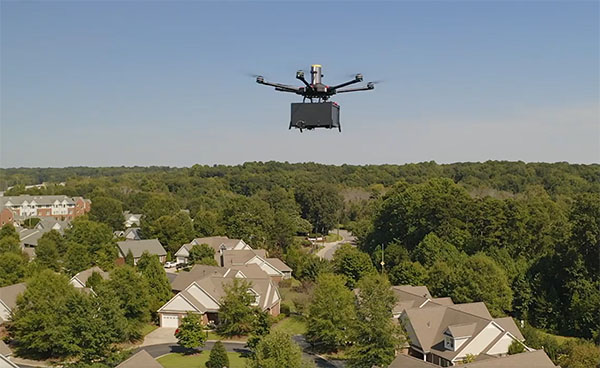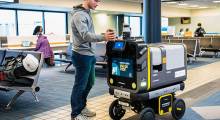Drone deliveries advanced in numerous trials in 2022, but most were in limited areas, and service providers must still navigate regulatory hurdles, according to Flytrex Inc. The Tel Aviv, Israel-based company has expanded its deliveries across the U.S. this year.
Retail and shipping heavyweights have also taken flight after years of development. Amazon Prime Air began deliveries in California and Texas this year, and Walmart started services in Arizona, Florida, and Texas. FedEx Express plans to begin drone cargo deliveries with Elroy Air in 2023.
How much could the drone delivery market grow? Estimates vary widely. Future Market Insights projected a 33% compound annual growth rate (CAGR), from $322 million in 2022 to $5.5 billion in 2032.
Research and Markets forecast a CAGR of 49%, from $228 million in 2022 to $5.5 billion by 2030. Allied Market Research predicted a compound annual growth rate (CAGR) of 43.3%, from $940 million in 2021 to $32.1 billion in 2031.
While the starting and ending totals differ, the growth rate and expectations of North America to lead demand were common to these estimates. IDTechEx noted that the market could take a decade to reach its full potential.
“The demand for cargo drones is expected to be very profitable during short term,” said a report from Fact.MR. “On the demand side, North America is most likely to be the most significant region. During the projected period, the East Asia region's robust supply chain network and capital expansion will provide manufacturers with new prospects.”

Drone deliveries take off across the U.S.
“In 2022, drone delivery became a reality for thousands of people in the U.S.,” said Yariv Bash, co-founder and CEO of Flytrex.
“From delivering vital medication to remote locations, to dropping off chicken wings in suburban backyards, drone delivery companies progressed and expanded their operations, demonstrating to the public the immense potential for faster, more economical, and more sustainable rapid delivery,” he told Robotics 24/7.
Flytrex this year partnered with Causey Aviation Unmanned, The Ice Cream Shop, Jersey Mike's, and Charley's Philly Steaks for services in North Carolina and Texas.
In addition, Dronedek this week said it is piloting autonomous deliveries of blood samples between a hospital to a lab for a major healthcare provider.
Technology to increase range, intelligence
“To lay the groundwork for further growth, drone delivery companies will need to advance drone technology to support harsher and more volatile weather conditions, as well as increase the vehicles’ payload and delivery range,” Bash said.
Drone Delivery Canada Corp. has been testing the Condor helicopter drone, the largest in its fleet. A2Z Drone Delivery has developed winches enabling drones to deliver a wide range of boxes.
On the software side, Drone Express has partnered with Microsoft to develop artificial intelligence for delivery drones. In October, Swift Navigation raised $100 million for positioning technology for drones, autonomous vehicles, and robots.
Regulatory approvals advance
Now that beyond visual line-of-sight (BVLOS) permission is available from the U.S. Federal Aviation Administration (FAA), more teleoperated and autonomous drone deliveries are possible.
In July, Flytrex got FAA approval to double its delivery radius to 2 nautical miles.
“2022 was also a milestone year from a regulatory standpoint,” Bash noted. “Two companies were granted Part 135 air carrier certification [to Joby Aviation and Zipline], bringing the total number of recipients to four [joining Wing Aviation LLC and UPS Flight Forward].”
“The FAA issued a Type Certification and Production Certificate to a UAS [unmanned aerial system] for the first time ever,” he added. Matternet, which received that certification, this month also began BVLOS testing between hospitals in Zurich, Switzerland.
“These developments show great progress towards much larger adoption of drone deliveries in the National Airspace,” said Bash. “It is anticipated that the governing bodies will continue to support the drone delivery companies’ expansion by facilitating these modifications in the FAA’s framework.”
“As drone delivery operations become more widespread and drone deliveries gain more experience and insight, regulatory processes will advance in tandem to ensure the safe and efficient integration of drones across U.S. airspace,” he said.
About the Author
Follow Robotics 24/7 on Linkedin
Article topics
Email Sign Up

















